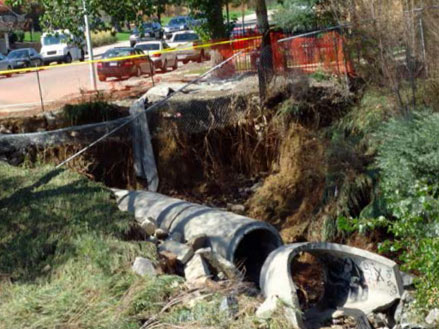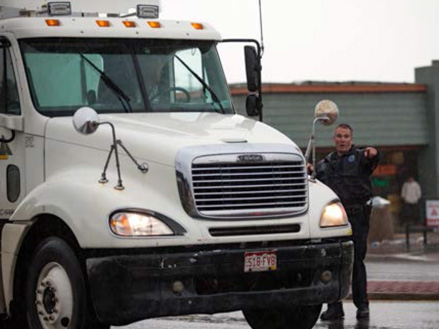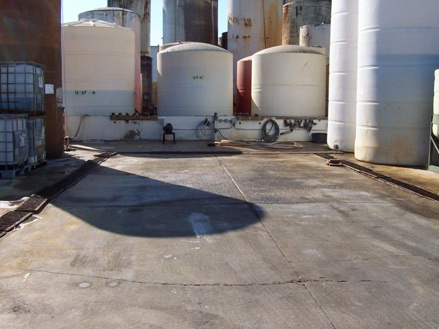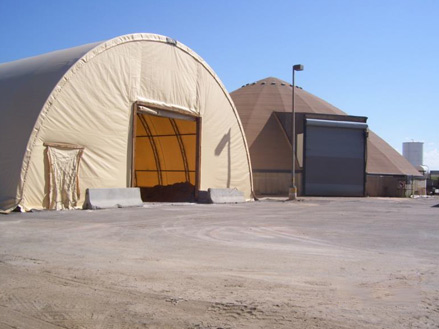OBJECTIVES & PRIORITIES
OPERATIONS & MAINTENANCE IMAGES




Courtesy of Aurora Water
Courtesy of Marla Keown, Aurora Sentinel
Stormwater Awareness Training, Courtesy of Aurora Water
Stormwater Awareness Training, Courtesy of Aurora Water
4 - 4
<
>
Increase efficiency of inspections in order to accomplish more inspections per year.
Ensure that assets are cataloged appropriately in the Aurora asset systems.
Obtain tablet or similar portable device for staff use in the field. Ensure that necessary information is available via the tablet.
Ensure that private ponds are maintained.
Provide service in accordance with MS4 compliance.
Define responsibilities with regard to O&M versus Aurora Streets.
Provide necessary staff training.
O&M PROGRAM ELEMENT GAPS
To access the full Gap Analysis Technical Memo, please click here. Gaps identified in Phase I and Phase II for the O&M Program are listed below.
O&M PATH FORWARD:
• Standardize the process for inspecting conduits under public streets.
• Coordinate conditions assessments for CMP, RCP, Concrete Channels, and all future conditions studies with the O&M, Asset Management, Funding, and CIP Program Elements.
• Develop tablet based system to be used by field staff, create standard inspection process, create standard forms for inspections, scan past PDF or hard copy inspections so that they are available to field staff. Ensure that CCTV, photo and other information are part of the system as it becomes feasible.
• Develop a process for tracking maintenance of BMPs before, during, and after construction.
• Develop procedures, processes, training, and ordinances to address maintenance of ponds and water quality facilities by private owners.
• Improve sediment management in drainage channels by creating a stronger method for assessment of vegetation and degradation, including documentation of the planned and modeled vegetation for stream channels.
• Update the Integrated Stream Management Plan to address tasks and responsibilities. The update should consider how aspects of the plan might be tracked in GIS and available to field personnel.
• Complete entry of as-built data into GIS and ensure that standard processes are in place.
• Create INFOR data that lists outfalls that need cleaning.
• Complete and QC the GIS data with respect to ponds, public vs. private pipes, and water quality elements.
• Add a wetlands layer to GIS and consider city-wide wetlands delineation.
• Add design storm frequency data to pipes in GIS.
• Rectify the fact that inspection and correction information is vested in a single individual. Consider ways to make the data more accessible across departments.
• Revise the MOU between the AW and PW to be more clear, add information about cross pans, and clarify roadside ditches.
• Revise methods of addressing emergency projects to speed up delivery.
• Revise the method of tracking small projects to ensure that all projects are being addressed, prioritized, funded, etc.
• Add asset IDs to drop structures or check structures.
• Document the process of completing work orders, including their integrated into Hansen, to document and link condition assessment data with regular work orders.
• Input UDFCD maintenance reports into electronic storage platform, including costs that UDFCD incurs on maintenance.
• Ensure that the O&M spreadsheet is viewable to all necessary parties and consider how to integrate historic information into the spreadsheet.
• Shift CCTV output to an easily usable format. Additionally, find a way to share information or encourage communication between POSM and Hansen.
• Determine correlation between cleaning catch basins and associated risk.
• Integrate technology to enhance the effectiveness and productivity of field staff by means of tablets or other methods.
• Establish a process that defines roles and responsibilities for planning and scheduling of work, corrective tasks, and programmed maintenance.
• Perform lifecycle costing analyses in a formal manner.
• Evaluate a tool that will predict operation and maintenance costs for new projects as a means of assisting with project justification.
• Evaluate opportunities to increase efficiency in inspections and data management.
• Consider combining several of the guidance documents into a more comprehensive document that is easy to utilize.
• Establish a process for integrated conditions assessment results into the Aurora Stormwater Master Plan and all resulting projects into the project cut sheets and prioritization model. Determine a funding model to allocate projects to asset management, O&M, or CIP. Utilize this process and its results to ensure that adequate funding and staffing is available.
• Maintain electronic copies of all inspection reports. Ensure these types of data are available via tablet to inspectors in the field.
• Create inspection forms for specific elements and standardize the process (i.e. CMP, RCP, channels, drop structures, etc.).
• Evaluate ways to provide CCTV, photo, and similar information to field personnel.
• Provide ownership information to staff in the field for complaints/projects/fixes.
• Ensure that all electronic systems and platforms are connected and complimentary (including MAXIMO).
• Track items that are given to Public Works to maintain.
• Standardize the process for maintaining and inspecting conduits under public streets (note: inspection happens in Asset Management).
• Define a process for tracking how water quality BMP elements are maintained before, during, and after construction.
• Define Level of Service in accordance with the MS4.
• Establish a “hammer” to ensure private ponds are maintained: (1) The City needs more direction with regard to how to proceed when issues are discovered. (2) The City ordinance only addresses ponds built after 2008, so there is no direction with regard to ponds build before 2008. (3) The City needs to inspect ponds on a regular basis to determine problems.
• Clarify maintenance responsibilities, enforcement practices, and requirements for private owners. Collect complete and accurate GIS data for privately maintained assets (including ponds).
• Address staffing gaps if the Highline Canal is migrated from Denver to Aurora.
• Determine frequency of inspecting private ponds.
• Update and maintain staff training relative to water quality, detention, and erosion control.
• Improve sediment management in drainage channels: (1) City needs stronger methods for assessment of vegetation and degradation, including documentation of the planned and modeled vegetation for stream channels. (2) Should have flow line from sediment perspective and vegetation level so that both could be addressed simultaneously. (3) Requires staff training.
• Train Aurora Water staff with regard to how streams should be managed and maintained, including basic identification of issues and resolutions (refer to Integrated Stream Management Plan).
• Assign tasks and responsibilities relative to stream management and maintenance.
• Close all gaps within the City GIS database in relation to the City's actual assets, including, but not exclusive to, pond data, public/private pipe data, drop structures, and other aspects of the system.
• Consider matching Aurora Water IDs for assets to the IDs assigned by UDFCD.
• Update asbuilts and storm revisions in GIS.
• Provide a list of outfalls that require cleaning in INFOR.
• Establish a process for completing lifecycle cost in a formal manner.
• Explore ways of comparing storm frequency to design capacity.
• Add private conduits to GIS.
• Add wetlands to GIS and mapping systems. Consider a city-wide wetlands delineation.
• Ensure that staff overlap in responsibilities to reduce risk if one staff member were to leave the City.
• Ensure that the O&M tracking spreadsheet is viewable to necessary staff (even read-only).
• Consider adding an Engineering Program Element.
• Address gaps in the Memorandum of Understanding between Aurora Water and Aurora Public Works.
• Evaluate ways to increase internal efficiency and decrease internal completion times.
• Establish a process for small stormwater improvements to utilize available funds.
O&M FUNCTION MATRIX

O&M FUNCTION MATRIX & PROGRAM ELEMENT DETAILS
Identifies functions, responsible parties, gaps, and overlaps in the Operations & Maintenance Program Element.
Aurora Water Stormwater Wastewater Operations Compliance Division 2011
2014 Aurora Rain Watch Training Presentation
City of Aurora September 2013 Flood Initial Report
AW Department Integration Planning June 2012
2013 Stormwater Division Operational Plan
City of Aurora MS4 Final Report
Final 2013 Aurora Water and Public Works MOU Shared Responsibilities
2012 Stormwater Wastewater Operations Compliance
Aurora Parks and Rec Noxious Weed Level of Service
Authorization to Discharge COA Phase I MS4 Permit
Spill Communication Plan and Resources
Aurora September 2013 Flood Initial Report
2014 Aurora Channel Inspection Summary Log
H-5 Condition and Rehabilitation Recommendation Spreadsheet

